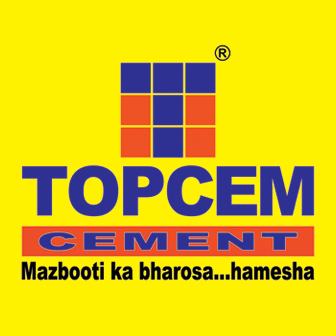Ischemic Stroke Treatment Options: Medications and Intervention
World Stroke Day, observed on 29th October, gets the focus back on managing the rising incidence of strokes in India.
India has a high stroke burden due to its enormous population, epidemiological shift, and high incidence of risk factors. High recurrent stroke rates, which range from 15% to 21% in population and hospital-based registries, are a substantial factor in the stroke burden in India.7 Stroke is the third leading cause of death and the sixth leading cause of disability in India.8Approximately 87% are ischemic, 10% reflect intracranial haemorrhage (ICH), and 3% are subarachnoid hemorrhage (SAH).2
Ischemic stroke is caused by an obstruction in a blood vessel that supplies blood to the brain. Plaque, or fatty deposits lining the walls of blood vessels, is the primary aetiology of ischemic stroke. Fatty deposits have the potential to induce two distinct forms of obstruction3:
- A cerebral thrombosis occurs when a thrombus, also known as a blood clot, forms at the location where lipid plaque accumulates in a cerebral blood vessel.
- A cerebral embolism is a blood clot that forms in the heart, in the large arteries in the upper chest or neck, or elsewhere in the circulatory system. A fragment of the clotted blood enters the bloodstream and travels through the brain vessels until it approaches the point where the vessels are too small to let it pass. Atrial fibrillation, an irregular pulse, is a major factor in embolisms.
Although stroke remains a critical health issue, better management of cardiovascular risk factors, greater awareness of symptoms, and prompt medical attention are helping to prevent strokes and improve outcomes.
Ischemic Stroke Treatment
The management of acute ischemic stroke (AIS) has undergone a remarkable transformation in the past decade, largely led by endovascular thrombectomy (EVT), with contributions through improvements in thrombectomy devices, medical management, and stroke workflows.2
Medication Treatment with Alteplase IV r-tPA:
The clot-dissolving medicine tPA (for tissue plasminogen activator), the first treatment for acute ischemic stroke to receive Food and Drug Administration (FDA) approval. Known by the generic name alteplase, tPA is given to patients through an IV in the arm, and it works by dissolving blood clots that block blood flow to the brain. When administered quickly after stroke onset (within three hours, as approved by the FDA), tPA helps to restore blood flow to brain regions affected by a stroke, thereby limiting the risk of damage and functional impairment.4 The treatment window for IV tPA was expanded to 4.5?hours, after the European Cooperative Acute Stroke Study III demonstrated sustained treatment benefits.2
Mechanical Thrombectomy to Remove the Clot:
Large vessel blockage stroke contributes to disability and mortality out of proportion to its incidence. Over time it was noted that intravenous thrombolysis alone was not sufficient for this stroke type. Slowly, endovascular approach and mechanical clot retrieval have come out to be the biggest advances in the field of neurology as well as modern medicine.5A mechanical thrombectomy removes a clot in eligible patients with a large vessel occlusion, or LVO.
In this procedure, doctors use a wire-cage device called a stent retriever. They thread a catheter through an artery in the groin up to the blocked artery in the brain. The stent opens and grabs the clot. Special suction tubes may also remove the clot.3The procedure is usually done within six hours of the onset of acute stroke symptoms but can be done up to 24 hours after symptoms begin if imaging tests show undamaged brain tissue.3
May include Alteplase IV r-tPA treatment in eligible patients.3
Mechanical thrombectomy has proven to be one of the strongest treatments modern medicine can offer for any disease condition. Such a strong treatment needs as its companions, a robust pre-hospital and post-discharge systems of care as well to provide the best possible benefit to patients5.
Ischemic stroke is a life-threatening condition that requires prompt medical attention. Medications such as tPA, antiplatelet drugs, anticoagulants, and statins play a crucial role in managing the acute phase of ischemic stroke and preventing future strokes. In more severe cases, interventions like mechanical thrombectomy may be necessary to restore blood flow to the brain.
6Furthermore, comprehensive rehabilitation is essential for the recovery and improved quality of life of stroke survivors. Early recognition and access to these treatment options can significantly enhance the chances of a successful outcome for individuals who experience an ischemic stroke.
Dr Firdaus Ahmed is Consultant, Vascular & Interventional Neuroradiology, GNRC Hospital, Guwahati.
Disclaimer:
Issued in public interest by Medtronic. Views expressed are independent views of the writer and intended for general information and educational purposes only and is not medical advice.
Ref:
- World Stroke Organization (WSO): Global Stroke Fact Sheet 2022
- Advances in Acute Ischemic Stroke Treatment: Current Status and Future Directions G. Bathla, P. Ajmera, P.M. Mehta, J.C. Benson, C.P. Derdeyn, G. Lanzino, A. Agarwal, W. Brinjikji American Journal of Neuroradiology May 2023, DOI: 10.3174/ajnr.A7872
- https://www.stroke.org/en/about-stroke/types-of-stroke/ischemic-stroke-clots
- https://my.clevelandclinic.org/health/treatments/22897-thrombectomy
- Prajapati C, Huded V, Mahajan N, Kulkarni A. Mechanical Thrombectomy: Review. Ann Indian Acad Neurol. 2022 Jul-Aug;25(4):606-615. doi: 10.4103/aian.aian_29_22. Epub 2022 Jun 9. PMID: 36211146; PMCID: PMC9540950.
- https://main.mohfw.gov.in/sites/default/files/Guidelines%20for%20Prevention%20and%20Managment%20of%20Stroke.pdf
- Verma, S. J., Gulati, P., Injety, R. J., Arora, D., Dhasan, A., Singhania, A., Khatter, H., Sharma, M., Sylaja, P. N., &Pandian, J. D. (2023, August 10). Secondary prevention by structured semi-interactive stroke prevention package in INDIA (SPRINT INDIA): Findings from the process evaluation of a randomized controlled trial. European Stroke Journal
- https://ncdirindia.org/all_reports/pbsrbook/resources/Factsheet.pdf



